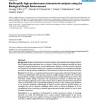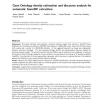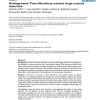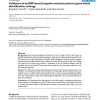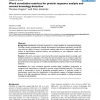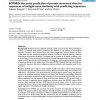BMCBI
2008
13 years 11 months ago
2008
BMCBI
2008
13 years 11 months ago
2008
Background: Graphs and networks are common analysis representations for biological systems. Many traditional graph algorithms such as k-clique, k-coloring, and subgraph matching h...
BMCBI
2008
13 years 11 months ago
2008
Background: Although the UniProt KnowledgeBase is not a medical-oriented database, it contains information on more than 2,000 human proteins involved in pathologies. However, thes...
BMCBI
2008
13 years 11 months ago
2008
Background: This paper describes and evaluates a sentence selection engine that extracts a GeneRiF (Gene Reference into Functions) as defined in ENTREZ-Gene based on a MEDLINE rec...
BMCBI
2008
13 years 11 months ago
2008
Background: Tissue MicroArray technique is becoming increasingly important in pathology for the validation of experimental data from transcriptomic analysis. This approach produce...
BMCBI
2008
13 years 11 months ago
2008
Background: Genetic association studies have been used to map disease-causing genes. A newly introduced statistical method, called exhaustive haplotype association study, analyzes...
BMCBI
2008
13 years 11 months ago
2008
Background: The engineering of ontologies, especially with a view to a text-mining use, is still a new research field. There does not yet exist a well-defined theory and technolog...
BMCBI
2008
13 years 11 months ago
2008
Background: Gene family identification from ESTs can be a valuable resource for analysis of genome evolution but presents unique challenges in organisms for which the entire genom...
BMCBI
2008
13 years 11 months ago
2008
Background: Classification of protein sequences is a central problem in computational biology. Currently, among computational methods discriminative kernel-based approaches provid...
BMCBI
2008
13 years 11 months ago
2008
Background: Protein structure prediction methods provide accurate results when a homologous protein is predicted, while poorer predictions are obtained in the absence of homologou...

